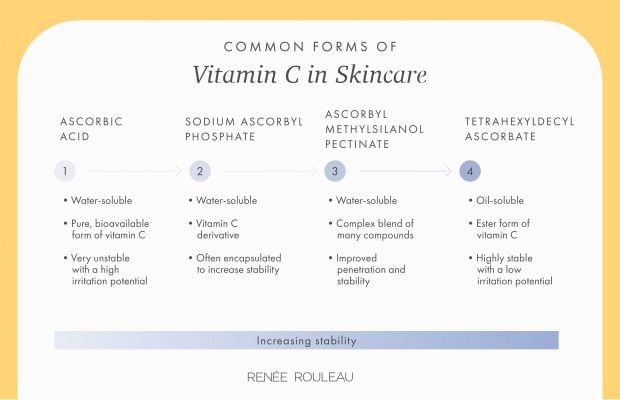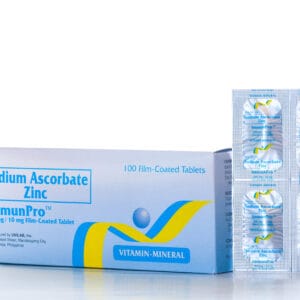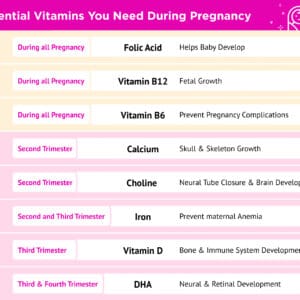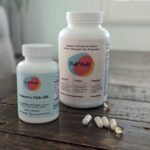3-O Ethyl Ascorbic Acid is a stable and potent derivative of Vitamin C that has gained significant attention in the skincare industry due to its numerous benefits. This water-soluble antioxidant is designed to address various skin concerns, including hyperpigmentation, dullness, and fine lines. By penetrating deep into the skin, 3-O Ethyl Ascorbic Acid helps to brighten, firm, and protect the skin, resulting in a more radiant and youthful appearance. Its effectiveness and versatility make it a popular ingredient in many skincare products, offering a range of benefits for different skin types and concerns.

The Benefits of 3-O-Ethyl Ascorbic Acid for Skin
3-O-Ethyl Ascorbic Acid is a stable and effective derivative of Vitamin C that has gained significant attention in the skincare industry due to its numerous benefits for the skin. This compound is known for its ability to brighten, even out skin tone, and protect the skin from environmental stressors.
Antioxidant Properties
One of the primary benefits of 3-O-Ethyl Ascorbic Acid is its antioxidant properties. It helps to neutralize free radicals, which are unstable molecules that can cause damage to skin cells, leading to signs of aging such as fine lines, wrinkles, and age spots. By protecting the skin from oxidative stress, 3-O-Ethyl Ascorbic Acid helps to maintain a youthful and healthy appearance.
Skin Brightening and Even Tone
3-O-Ethyl Ascorbic Acid is also known for its ability to inhibit melanin production, which can lead to a more even skin tone and a reduction in the appearance of hyperpigmentation. This makes it an effective ingredient for those looking to brighten their complexion and reduce the appearance of dark spots.
Collagen Production and Skin Elasticity
Furthermore, 3-O-Ethyl Ascorbic Acid has been shown to stimulate collagen production, which is essential for maintaining skin elasticity and firmness. As we age, collagen production naturally decreases, leading to a loss of skin elasticity and the formation of fine lines and wrinkles. By boosting collagen production, 3-O-Ethyl Ascorbic Acid helps to maintain a more youthful and resilient skin.
Protection Against Environmental Stressors
3-O-Ethyl Ascorbic Acid also offers protection against environmental stressors such as UV damage and pollution. These stressors can cause significant damage to the skin, leading to premature aging and a range of other skin concerns. By neutralizing free radicals and protecting the skin from oxidative stress, 3-O-Ethyl Ascorbic Acid helps to maintain a healthy and resilient skin.
Stability and Penetration
One of the key advantages of 3-O-Ethyl Ascorbic Acid is its stability and ability to penetrate deeply into the skin. Unlike some other forms of Vitamin C, which can be unstable and difficult to absorb, 3-O-Ethyl Ascorbic Acid is able to deliver its benefits deep into the skin, making it a highly effective ingredient.
| Benefits | Description |
|---|---|
| Antioxidant Properties | Neutralizes free radicals and protects the skin from oxidative stress |
| Skin Brightening | Inhibits melanin production and evens out skin tone |
| Collagen Production | Stimulates collagen production and improves skin elasticity |
| Protection Against Environmental Stressors | Protects the skin from UV damage and pollution |
| Stability and Penetration | Stable and able to penetrate deeply into the skin |
Is 3 O ethyl ascorbic acid good for your skin?

3-O-Ethyl ascorbic acid is a derivative of Vitamin C, which is widely used in skincare products due to its antioxidant properties. It is known for its ability to brighten and even out skin tone, while also providing protection against environmental stressors.
Benefits of 3-O-Ethyl Ascorbic Acid
3-O-Ethyl ascorbic acid is a stable and lipophilic form of Vitamin C, making it easily absorbed into the skin. It has been shown to inhibit melanin production, reducing the appearance of hyperpigmentation and promoting a more even-toned complexion.
- It has antioxidant properties, neutralizing free radicals and protecting the skin from oxidative stress.
- It can help to improve skin elasticity and firmness by stimulating collagen production.
- It has been shown to have a synergistic effect when combined with other skincare ingredients, enhancing their effectiveness.
How 3-O-Ethyl Ascorbic Acid Works
3-O-Ethyl ascorbic acid works by penetrating deep into the skin, where it can neutralize free radicals and inhibit melanin production. This helps to reduce the appearance of fine lines and wrinkles, while also promoting a more even-toned complexion.
- It is stable and non-irritating, making it suitable for use on sensitive skin.
- It can be used in combination with other active ingredients, such as retinol and niacinamide, to enhance their effectiveness.
- It has been shown to have a long-lasting effect, providing continuous benefits with regular use.
Using 3-O-Ethyl Ascorbic Acid Effectively
To get the most out of 3-O-Ethyl ascorbic acid, it’s essential to use it consistently and in combination with other complementary ingredients. This can help to enhance its effectiveness and promote optimal skin health.
- Use it in the morning to help protect the skin from environmental stressors throughout the day.
- Combine it with other antioxidants, such as Vitamin E and ferulic acid, to enhance its benefits.
- Be patient, as it may take some time to see the full benefits of using 3-O-Ethyl ascorbic acid.
Is 3 O ethyl ascorbic acid the same as L-ascorbic acid?

3-O-Ethyl ascorbic acid and L-ascorbic acid are both derivatives of vitamin C, but they are not the same compound. While they share some similarities, they have distinct differences in terms of their chemical structure, stability, and functionality.
Chemical Structure Comparison
The chemical structure of L-ascorbic acid is characterized by its ring-shaped molecular configuration, which is essential for its antioxidant properties. In contrast, 3-O-ethyl ascorbic acid is a derivative of L-ascorbic acid, where an ethyl group is attached to the third carbon atom, resulting in a modified molecular structure. This alteration affects its physical and chemical properties.
- The addition of the ethyl group enhances the lipophilicity of 3-O-ethyl ascorbic acid, making it more soluble in non-polar solvents.
- The modified structure also influences its stability and reactivity, with 3-O-ethyl ascorbic acid being more resistant to degradation than L-ascorbic acid.
- The antioxidant activity of 3-O-ethyl ascorbic acid is still present, although it may differ in its mechanism and efficacy compared to L-ascorbic acid.
Functional Differences
L-ascorbic acid and 3-O-ethyl ascorbic acid exhibit different functional properties, primarily due to their distinct chemical structures. L-ascorbic acid is highly effective in collagen synthesis and iron absorption, whereas 3-O-ethyl ascorbic acid is often used in skincare products due to its improved skin penetration and stability.
- 3-O-ethyl ascorbic acid is more suitable for topical applications due to its enhanced lipophilicity and stability.
- L-ascorbic acid is commonly used in dietary supplements and food products, where its antioxidant properties are beneficial.
- The bioavailability of 3-O-ethyl ascorbic acid may differ from that of L-ascorbic acid, potentially affecting its efficacy in various applications.
Stability and Applications
The stability of L-ascorbic acid and 3-O-ethyl ascorbic acid varies significantly, impacting their usage in different contexts. L-ascorbic acid is highly susceptible to oxidation and degradation, whereas 3-O-ethyl ascorbic acid is more stable due to its modified structure.
- The stability of 3-O-ethyl ascorbic acid makes it a preferred choice for cosmetic and skincare products.
- L-ascorbic acid requires careful handling and storage to maintain its potency and effectiveness.
- The choice between L-ascorbic acid and 3-O-ethyl ascorbic acid depends on the specific application and desired outcome.
What not to mix with ethyl ascorbic acid?

When considering what not to mix with ethyl ascorbic acid, it’s essential to understand its properties and potential interactions. Ethyl ascorbic acid is a derivative of vitamin C, known for its antioxidant and skin-brightening properties. It is commonly used in skincare products for its ability to inhibit melanin production and provide antioxidant protection.
Incompatible Ingredients with Ethyl Ascorbic Acid
Ethyl ascorbic acid can be unstable when mixed with certain ingredients, which may lead to a decrease in its effectiveness or even cause adverse reactions. Some ingredients that are generally considered incompatible with ethyl ascorbic acid include those that are highly acidic or alkaline, as they can disrupt its stability.
- Acidic ingredients like alpha-hydroxy acids (AHAs) or beta-hydroxy acids (BHAs) can potentially destabilize ethyl ascorbic acid.
- Alkaline ingredients such as certain cleansers or toners with high pH levels can also degrade ethyl ascorbic acid.
- Oxidizing agents can react with ethyl ascorbic acid, reducing its efficacy or causing unwanted reactions.
Specific Skincare Ingredients to Avoid Mixing
When formulating or layering skincare products containing ethyl ascorbic acid, it’s crucial to avoid mixing it with certain active ingredients that may not be compatible. For instance, mixing ethyl ascorbic acid with niacinamide is generally considered safe, but combining it with certain other actives requires caution.
- Mixing with benzoyl peroxide can lead to oxidation and a decrease in the effectiveness of both ingredients.
- Using ethyl ascorbic acid with retinol or its derivatives may increase the risk of irritation, although this doesn’t necessarily mean they cannot be used together; careful formulation is key.
- Combining ethyl ascorbic acid with other antioxidants can be beneficial, but the stability and compatibility of the specific antioxidants being mixed should be considered.
Precautions for Using Ethyl Ascorbic Acid with Other Products
To maximize the benefits of ethyl ascorbic acid and minimize potential issues, consider the concentration of ethyl ascorbic acid and other ingredients, as well as the overall formulation of the product.
- Start with lower concentrations to assess tolerance when introducing ethyl ascorbic acid into your skincare routine, especially if you’re using it with other active ingredients.
- Be cautious when layering products containing ethyl ascorbic acid with other products that have exfoliating or irritating properties.
- Always check the pH level of products being mixed or layered with ethyl ascorbic acid to ensure compatibility.
What form of ascorbic acid is best for skin?

The most effective form of ascorbic acid for skin is a topic of ongoing debate among skincare enthusiasts and experts. While there are various forms of vitamin C, some are more suitable for topical application than others. Stability and penetration are key factors to consider when selecting a vitamin C derivative for skincare.
Benefits of Ascorbic Acid for Skin
Ascorbic acid is renowned for its antioxidant properties, which help protect the skin from environmental stressors and damage caused by free radicals. It also plays a crucial role in collagen production, improving skin elasticity and reducing the appearance of fine lines and wrinkles. Some of the benefits of ascorbic acid for skin include:
- Brightening and evening out skin tone
- Reducing the appearance of hyperpigmentation and dark spots
- Enhancing skin firmness and texture
Forms of Ascorbic Acid for Topical Application
Several forms of ascorbic acid are used in skincare products, each with its unique characteristics. Some popular derivatives include Sodium Ascorbyl Phosphate, Magnesium Ascorbyl Phosphate, and Ascorbyl Glucoside. These forms are often preferred over pure ascorbic acid due to their improved stability and reduced risk of irritation. Key considerations when choosing a vitamin C derivative include:
- Stability and resistance to oxidation
- Solubility and ability to penetrate the skin
- pH level and compatibility with other skincare ingredients
Precautions and Potential Side Effects
While ascorbic acid is generally considered safe for topical use, some individuals may experience skin irritation or sensitivity. To minimize risks, it’s essential to start with a low concentration and gradually increase as needed. Additionally, combining vitamin C with other skincare ingredients, such as retinol or niacinamide, can enhance its benefits while reducing potential side effects. Some factors to consider when using ascorbic acid include:
- Concentration and potential for irritation
- Combination with other skincare ingredients
- Storage and handling to maintain product stability
Frequently Asked Questions
What are the benefits of using 3 O Ethyl Ascorbic Acid on the skin?
The benefits of using 3 O Ethyl Ascorbic Acid on the skin are numerous. This stable derivative of Vitamin C is known for its ability to brighten and even out skin tone, reducing the appearance of hyperpigmentation and dark spots. It also has antioxidant properties, which help to protect the skin from environmental stressors and damage caused by free radicals. Furthermore, 3 O Ethyl Ascorbic Acid can help to improve skin texture and reduce the appearance of fine lines and wrinkles, giving the skin a more radiant and youthful appearance.
How does 3 O Ethyl Ascorbic Acid compare to other forms of Vitamin C?
3 O Ethyl Ascorbic Acid is considered to be a more stable and effective form of Vitamin C compared to other derivatives. Unlike L-Ascorbic Acid, which can be unstable and irritating to the skin, 3 O Ethyl Ascorbic Acid is gentle and non-irritating, making it suitable for sensitive skin. It is also more easily absorbed into the skin, allowing it to penetrate deeper and deliver more effective results. Additionally, 3 O Ethyl Ascorbic Acid is less prone to oxidation, which can reduce its effectiveness over time.
Can 3 O Ethyl Ascorbic Acid be used in combination with other skincare products?
Yes, 3 O Ethyl Ascorbic Acid can be used in combination with other skincare products to enhance its benefits. It is often paired with other antioxidants, such as Vitamin E and Ferulic Acid, to boost its effectiveness and provide additional protection against environmental stressors. It can also be used with hydrating products, such as hyaluronic acid, to help lock in moisture and soothe the skin. However, it’s recommended to patch test any new skincare combinations to ensure compatibility and avoid any potential irritation.
Is 3 O Ethyl Ascorbic Acid suitable for all skin types?
3 O Ethyl Ascorbic Acid is generally considered to be suitable for all skin types, including sensitive skin. Its gentle and non-irritating properties make it an ideal ingredient for those who are new to using Vitamin C or have skin that is easily irritated. However, as with any skincare product, it’s always a good idea to patch test and start with a small concentration to ensure tolerance. Additionally, 3 O Ethyl Ascorbic Acid can be used on dry, oily, or combination skin, as it is non-comedogenic and won’t clog pores.
















